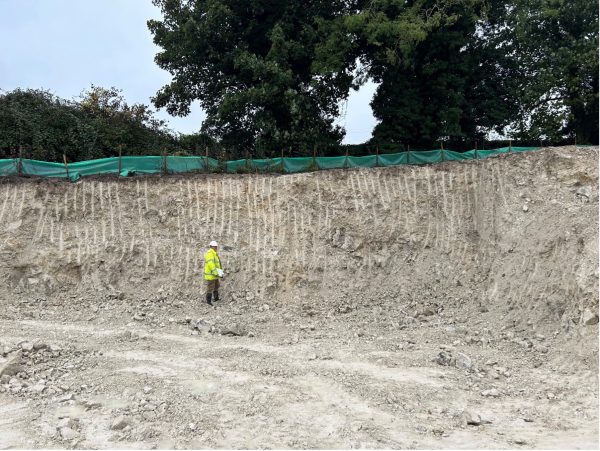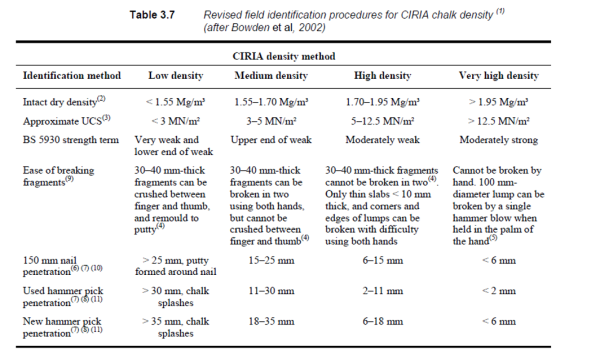The G&W Guide to… Chalk – Description & Classification
Geotechnical • Regulation
If you’re building in southern or eastern England – or anywhere chalk underlies your site – you’re standing on a geological wildcard. Chalk is not just white rock; it’s a complex, variable material that demands careful description and classification before any engineering begins. Welcome to the G&W Guide to the Description and Classification of Chalk. Here we break down the essentials for geotechnical success.
What is Chalk?
Chalk is a fine-grained, ultra-pure limestone, formed from the compressed remains of microscopic plankton over millions of years. It’s highly porous, both in its matrix and along fractures, which makes it behave unpredictably under load and moisture changes.

Why Classification Matters
Chalk’s engineering behaviour varies wildly depending on its textural/microscopic composition, structure, weathering, and moisture content. Misclassify it, and you risk foundation failures, slope instability, or costly redesigns.
The CIRIA Classification Scheme
CIRIA’s scheme divides chalk into two broad categories:
- Structured Chalk – Intact rock with visible fractures. Graded by fracture spacing, aperture, and density
- Structureless Chalk – Weathered chalk that behaves like soil. Subdivided into:
- Grade Dc: Clast-dominated matrix
- Grade Dm: Matrix-dominated soil.
Each grade reflects the chalk’s strength, compressibility, and suitability for foundations or earthworks.
Field Description Tips
When describing chalk on site, consider:
- Colour and texture – White to grey, smooth or gritty
- Dry Density – Field measurements are key
- Fracture patterns – Note spacing and openness
- Weathering profile – Surface chalk may differ dramatically from deeper layers.
Logging Chalk: Trial Pits, Boreholes, and the Forgotten Importance of Dry Density
When chalk is shallow, trial pits are essential. They allow direct inspection of the chalk in situ – its colour, texture, fracture patterns, and weathering profile. You can touch it, break it, and observe its behaviour in real time. This tactile experience is often the difference between a good description and a great one.
There are even old stories of large-diameter boreholes – sometimes over a metre wide – being sunk so engineers could climb down and log the chalk face-to-face. It might sound extreme today, but it underscores how seriously chalk variability was taken. These pioneers understood that chalk isn’t just a rock… It’s a spectrum of behaviours.
Dry Density: The Silent Influencer
One of the most critical yet frequently overlooked parameters in chalk classification is dry density. It’s a key indicator of the chalk’s strength, compressibility, and suitability for construction. Structured chalk with high dry density behaves more like rock, while lower-density chalk – especially when weathered – can act more like soil.
Yet, dry density is often skipped in routine logging. Why? Possibly because it requires lab testing, or perhaps because visual classification dominates field practice. But ignoring it can lead to misclassification, especially in transitional zones where chalk shifts from structured to structureless.
A Pro Tip: Always undertake field dry density testing when logging chalk in trial pits or boreholes. It’s the missing puzzle piece that can make or break your ground model.
Here at Ground & Water, when it comes to ascertaining the dry density of chalk, we don’t think the lab tests are always that reliable…

Final Thoughts
Chalk is deceptively complex. The Ground & Water approach – grounded in CIRIA’s rigorous classification and enriched by field experience – helps engineers avoid surprises and developers to build with confidence. Whether you’re designing a retaining wall in Dover or a housing estate in the Wolds; start with a proper chalk description. Your project’s stability, profitability and reputation depend on it.
